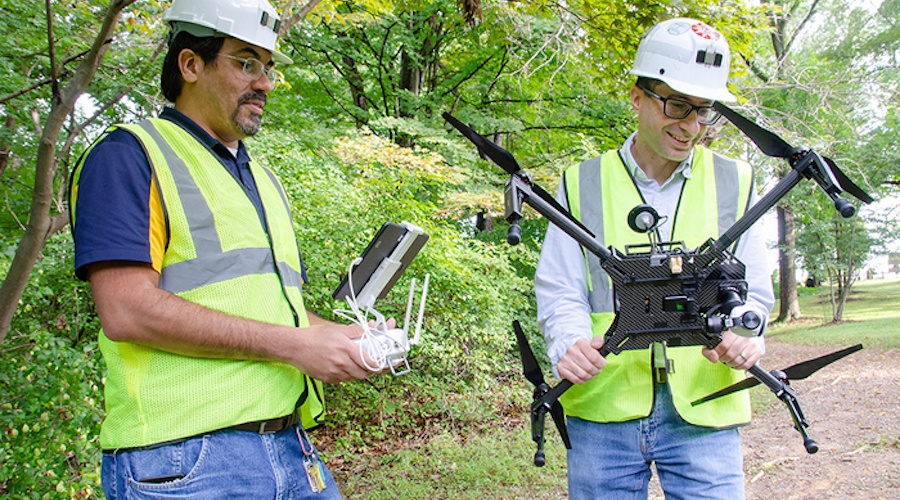
The goal of the project is to find a way to detect leakages and failures at coal waste facilities before tailings and coal ash are released into the environment. Coal ash is considered one of the largest US supplies of industrial waste, containing metals such as lead, mercury, chromium, selenium, cadmium and arsenic, which never biodegrade and are toxic to humans.
“Failure of these structures has been shown to be catastrophic, causing massive mudslides that have devastated entire communities and created irreversible environmental damage,” Ihsan Berk Tulu, one of the engineers involved in the project, said. “Industry and federal and state governments spend great effort and time inspecting these structures, finding hazards that might lead to wastewater leakages or failures.”
AI + autonomous features
Tulu and his colleague Guilherme Pereira’s intelligent drone is expected to do its work autonomously and be able to create thermal and visual images and high-resolution, three-dimensional maps of the coal waste storage facilities, which will permit the detection of cracks, deformities and other hazards in the structures.
A second objective of the project is to create and equip the device with software that uses artificial intelligence-based algorithms to detect potential hazards. The software will collect and use thermal and visual images, as well as 3D point clouds, a technology that utilizes laser scanners to measure where light hits a particular surface or object, to generate highly accurate 3D models of the coal storage facilities. This will allow researchers to identify potential hazards quickly and efficiently without having to physically be at the inspection site.
“I’m originally from Minas Gerais state in Brazil, where catastrophic accidents with tailing dams happened recently, so the project has a special motivation for me,” Pereira said. “It is an opportunity to develop a technology that can save lives in the United States and in my country.”
In 2015, the Samarco mine tailings dam in Bento Rodrigues, Brazil collapsed, unleashing thousands of pounds of hazardous mud spill that killed 19 people. The mine waste eventually flowed more than 400 miles from its source to the Atlantic Ocean, contaminating water supplies along its route.
In the US, a tailings dam in Logan County, West Virginia, failed in 1972 following a heavy rainstorm, known as the Buffalo Creek Flood. This catastrophic collapse released 132 million gallons of wastewater into the surrounding community. The incident killed 125 people, injured 1,100 others and left 4,000 people without homes.
“We will train the next generation of engineers in the application of robotics technologies for our mining communities,” Tulu said. “A successful outcome from this project will be another technology tool for both West Virginia’s and the nation’s mining industries to improve the safety of the mines and the health of the nearby communities.”




